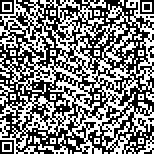吴少璞,李学,祁亚伟,等.重复经颅磁刺激联合动作观察疗法对脑卒中患者运动及认知功能恢复的影响[J].中华物理医学与康复杂志,2022,44(1):35-39
扫码阅读全文

|
| 重复经颅磁刺激联合动作观察疗法对脑卒中患者运动及认知功能恢复的影响 |
|
| |
| DOI:10.3760/cma.j.issn.0254-1424.2022.01.006 |
| 中文关键词: 脑卒中 事件相关电位 重复经颅磁刺激 动作观察疗法 |
| 英文关键词: Stroke Event-related potentials Transcranial magnetic stimulation Action observation therapy |
| 基金项目:河南省科技厅科技攻关项目(162102310283);河南省医学科技攻关计划项目(SBGJ202002005) |
|
| 摘要点击次数: 5573 |
| 全文下载次数: 8531 |
| 中文摘要: |
| 目的 观察事件相关电位(ERP)指导下重复经颅磁刺激(rTMS)联合动作观察疗法(AOT)对脑卒中恢复期患者认知功能及运动功能的影响。 方法 采用随机数字表法将90例脑卒中恢复期患者分为对照组、rTMS组及观察组,每组30例。对照组给予常规康复干预(包括腰部、上肢、下肢、平衡、步行、记忆、注意力、定向力、空间知觉及执行能力训练等);rTMS组在此基础上辅以ERP指导下rTMS治疗,每天治疗1次,每周治疗5 d;观察组则给予ERP指导下rTMS及AOT治疗,AOT治疗每天2次,每周治疗5 d。于治疗前、治疗4周后分别采用简易精神状态量表(MMSE)、蒙特利尔认知评估量表(MoCA)、Fugl-Meyer运动功能量表(FMA)、Berg平衡量表(BBS)及改良Barthel指数(MBI)量表评估患者认知、运动功能及日常生活活动(ADL)能力改善情况。 结果 治疗后3组患者MMSE、MoCA、FMA、BBS及MBI评分均较治疗前明显改善(P<0.05);并且rTMS组MMSE、MoCA、上肢FMA及MBI评分亦显著优于对照组水平,观察组MMSE评分[(24.37±1.69)分]、MoCA评分[(23.00±1.80)分]、上肢FMA评分[(45.80±6.76)分]、下肢FMA评分[(26.80±3.56)分]、BBS评分[(36.40±4.28)分]及MBI评分[(74.00±5.13)分]均显著优于rTMS组及对照组水平(P<0.05)。 结论 ERP指导下rTMS联合AOT训练能有效改善脑卒中恢复期患者认知功能、运动功能及平衡能力,对提高患者生活质量具有重要意义。 |
| 英文摘要: |
| Objective To observe any effect of combining repetitive transcranial magnetic stimulation (rTMS) under the guidance of event related potentials (ERPs) with action observation therapy (AOT) on the cognitive and motor functioning of stroke survivors in the recovery period. Methods Ninety stroke survivors were randomly divided into a control group, an rTMS group and an rTMS+AOT group, each of 30. All three groups were given conventional rehabilitation treatment (including the training of waist, upper and lower limb function, balance, walking, memory, attention, orientation, spatial perception and executive ability). The rTMS group also received one session of ERP-based rTMS daily five times a week. The rTMS+AOT group was given the same rTMS combined with AOT twice a day, five times a week. Before and after 4 weeks of treatment, the Mini-mental State Examination (MMSE), the Montreal Cognitive Assessment Scale (MOCA), the Fugl-Meyer assessment scale (FMA), the Berg Balance Scale (BBS) and the modified Barthel index (MBI) were used to evaluate each subject′s cognitive and motor ability and their skill in the activities of daily living. Results After the treatment, the average MMSE, MOCA, FMA, BBS and MBI scores of all groups had improved significantly, but the average MMSE, MOCA, upper limb FMA and MBI scores of the rTMS group were then significantly higher than the control group′s averages. And the average scores of the rTMS+AOT group were significantly better than those of the other two groups. Conclusion Combining rTMS guided by ERPs with AOT can effectively improve the cognitive functioning, motor control and balance of stroke survivors, and improve their ability in the activities of daily living. |
|
查看全文
查看/发表评论 下载PDF阅读器 |
| 关闭 |
|
|
|